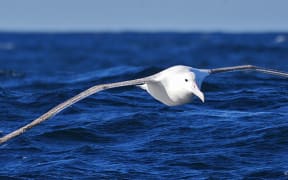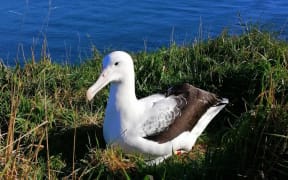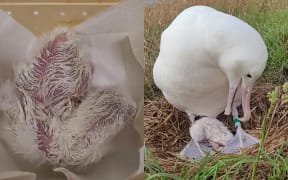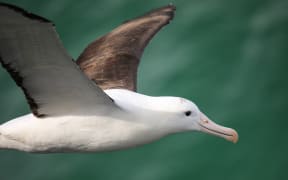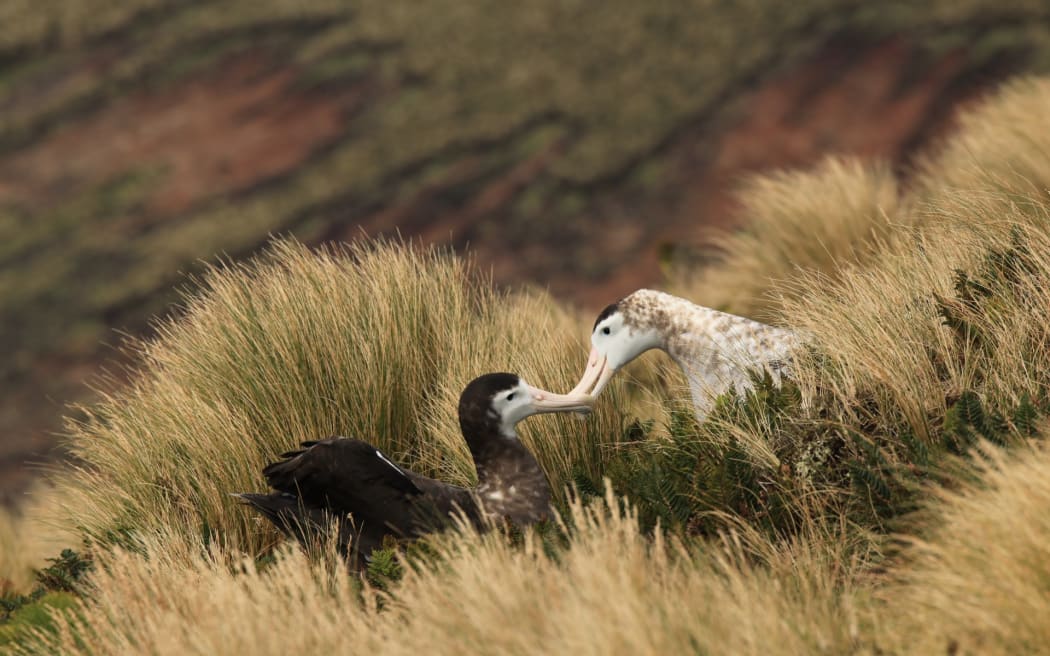
A pair of Antipodean albatrosses touch bills. Photo: Supplied / Charlie Barnett
A new project is underway to save more New Zealand seabirds such as the Antipodean albatross from becoming victim to longline fishing boats.
The Southern Seabirds Trust and Department of Conservation are working to create a 'seabird -safe longline fishing toolkit' - that will be given to international fishing boats.
Trust convenor Janice Molloy said New Zealand was moving towards 100 percent monitoring of its fishing fleet which was positive, however, international boats that fish outside the country's exclusive economic zone (EEZ) were not covered by New Zealand's laws and that was where the birds were getting into trouble.
"The reason we started this project is because of the Antipodean albatross which is in real strife. It breeds on the Antipodes Islands which are about 750 kilometres south east of Dunedin.
"A couple of scientists go out every summer to monitor the birds and they've found that the population is plummeting. That can't be explained just by New Zealand fishing."
Molloy said they knew the birds were getting caught in the high seas because some of them have satellites on their backs which showed they undertook huge flights to find food - and that those flight paths were overlapping with hundreds of fishing vessels outside of New Zealand's EEZ.
"Sadly, it's mostly the females that are getting caught because of where they go to feed, so on the island there's a real shortage of females.
"The birds mate for life so the males are waiting on the nest for their dead partner to return, year after year."
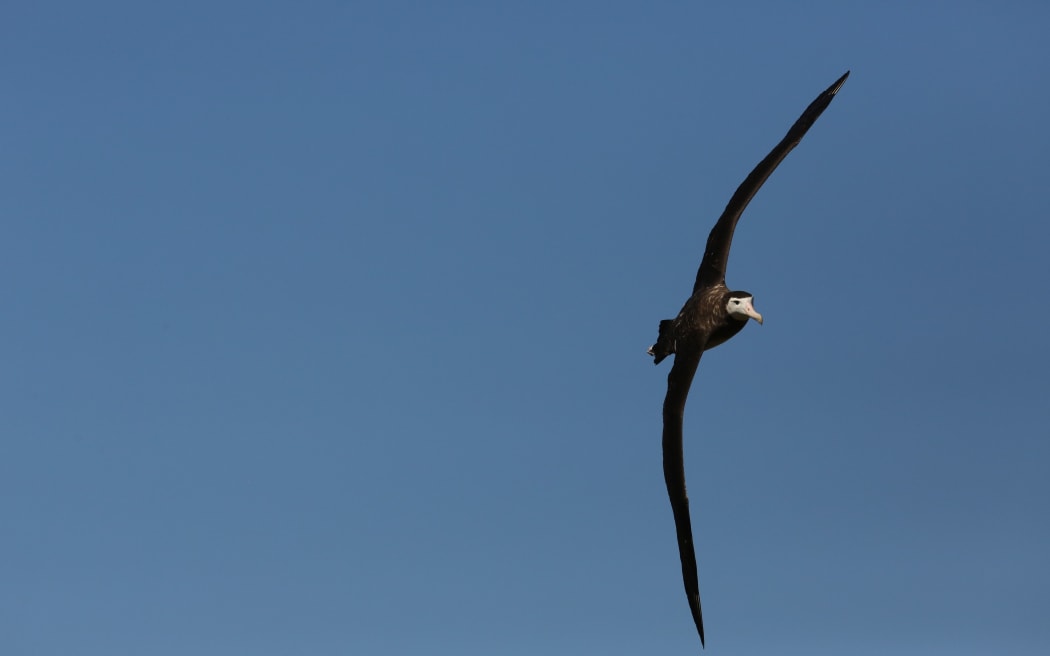
A female in flight. Photo: Supplied / John Aitchison
Molloy said the government has been raising the issue through official channels but the trust has also been developing relationships with the tuna companies involved.
"The companies are receptive to change as there's a growing interest in sustainability and protecting wildlife."
Molloy said the toolkit will have maps to show the fleets where the seabirds feed.
"The second part is laying out what practices they can use to not catch the seabirds, how effective they are, what they cost and and the impact they might have on their catch.
"And the third part is the ways the vessels can demonstrate that they're actually using these methods - obviously observers and electronic monitoring are options."
The Southern Seabirds Trust is investing $315,000 in the project with the Ministry for Primary Industries giving $175,000 through its Sustainable Food and Fibre Futures Fund.
Molloy said the New Zealand Nature Fund ran a fundraising dinner for the cause with generous donors helping get the project across the line.
Last year DOC modelling showed the Antipodean albatross faced extinction by 2050.
"There will be still be birds around but ... they enter what we call an extinction vortex and it's pretty hard to get a species back from that point," Dr Stephanie Borrelle from Birdlife International told Morning Report.

